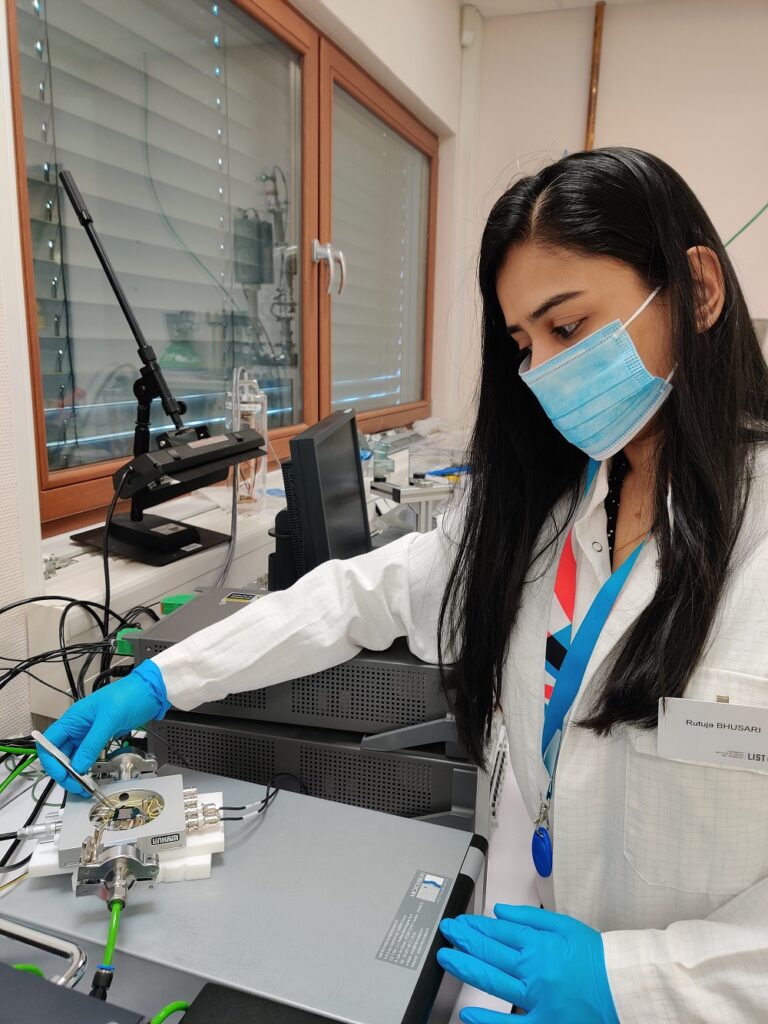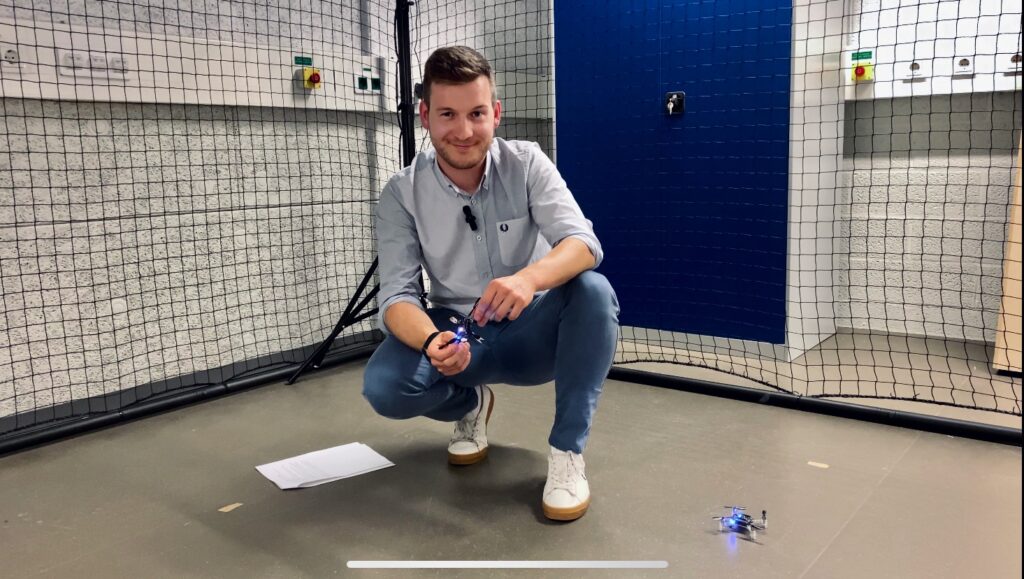Launched in 2015/16, the FNR’s PRIDE programme provides block PhD grants to Doctoral Training Units (DTUs). The MASSENA DTU brings together 20+ PhD candidates and their supervising PIs, as well as two coordinators. Spread across four thematic clusters, the various projects are all centred around materials for sensing and energy harvesting. We take a closer look at the MASSENA DTU, one of the first 11 DTUs to be funded in the inaugural PRIDE Call.
How does one approach planning and running a DTU for 22 PhD candidates and Principal Investigators? What are the main challenges? How does communication work on this scale, and across institutions? The FNR spoke to MASSENA coordinators and PIs Prof Susanne Siebentritt (University of Luxembourg) and Dr Emmanuel Defay (Luxembourg Institute of Science and Technology – LIST) about the experiences running such a large multi-topic spanning DTU.

RELATED FUNDING
The key: clusters
The purpose of the inter-institutional DTU is to educate doctoral candidates in research on advanced materials with a specific focus on materials for sensing and energy harvesting – cornerstones of modern society.
The MASSENA DTU is organised in four thematic clusters: three application-oriented clusters (strain sensors and energy harvesters; electronic sensors and energy harvesters; bio-sensing), which are supported by a transversal cluster on electronic structure theory.
Each PhD candidate has an individual PhD supervisor, meaning the DTU brings together over 40 scientists, including five FNR ATTRACT Fellows and two ERC grantees.
“The unusual large size of the DTU was a challenge,” DTU coordinators Siebentritt and Defay explain, continuing:
“Although the whole programme is under the banner of materials for sensing and energy harvesting, the overall coherence of our project needed this clusters breakdown, enhancing the readability of our contributions and helping defining trainings that were more focused to our students’ needs. On the other hand, the fact that so many of our colleagues wanted to be part of this new project, was very encouraging.”
One clear challenge that comes to mind is how to maintain regular communication when so many people are involved. Here, the cluster set up has been tremendously helpful:
“The clusters have been a great idea to enable frequent interactions between PhD students and supervisors. They are much lighter to manage than the whole MASSENA and have been chosen in terms of topics, enabling more natural interactions,” DTU coordinators Siebentritt and Defay explain.

Of course, it can be tricky to maintain scientific coherence on the MASSENA scale with so many different topics, something the coordinators have taken note for future potential DTUs. The majority of the individual PhD theses are nearing completion in 2021 (some already defended their thesis in 2020) and across the nearly two dozen projects, much scientific knowledge has been gathered, with achievements such as:
- Discovering that electrocaloric materials can be a credible alternative to future cooling technologies (cluster 1)
- Breakthrough in the efficiency of sulphide chalcopyrite solar cells (cluster 2)
- Discovering that the lipids surrounding our cell membranes, as well as many viruses (like SARS-CoV-2), interact with liquid crystals in such a way that they phase separate, generating islands that are easy to identify optically, thanks to their striking colour differences (cluster 3)
- Explaining the stabilisation mechanisms of the desired ferroelectric phase of doped HfO2 by first principles calculation, a material of significant importance for future volatile memories (cluster 4).
Stronger inter-institutional bonds
The biggest impact MASSENA has had overall is more mutual recognition between researchers at the two institutions: a significant strengthening of the bonds between the University of Luxembourg and LIST, who have also run a large joint doctoral programme gathering no less than 110 PhD candidates in physics and material sciences from the two institutions.
“MASSENA has been pivotal in setting up our doctoral programme and making it a truly joint one: the huge improvement of our doctoral programme in materials science and physics that today stands for an example in Luxembourg’s research landscape – with a strong collaboration of our two institutions – is a direct outcome of MASSENA.”


A future in research and industry
The PhD candidates in the DTU have from the beginning of their doctoral studies been embedded in the clusters and surrounded by the spirit of multi-topic and inter-institutional collaboration. As part of MASSENA, the PhD candidates have organised the Young Scientists’ Conference, taking place in June 2021.
“The PhD candidates have been very well trained in current and competitive topics, also with good links internationally and to industry. As of early 2021, three candidates have defended their thesis, with many more of the candidates to follow in 2021. They have great offers for postdoc positions, and others will be well prepared for a career in industry.”
“Furthermore, the cooperation within MASSENA was so good that two of our candidates are getting married!”
PIs: E. Defay; T Granzow (LIST);
M Esposito; A Michels; Giusy Scalia (University of Luxembourg)
The focus in this cluster is on sensors and energy harvesters related to mechanical strain and/or temperature variation. The main goals are to identify materials for strain sensors and energy harvesters, developing appropriate process technologies, and finally bringing some of them to proof of concept level.
Cluster one PhD candidates & projects:
- Samuel Lourenço Jacob: ‘Quantum thermodynamics in real space using scattering theory’ (University of Luxembourg)
- Meenu Murali: ‘Pressure sensors with liquid crystals and carbon nanotubes’ (University of Luxembourg) [Graduated 2020]
- Alvar Torello Massana: ‘Energy-Efficient heat pump based on caloric materials’ (LIST)
- Naveen Aruchamy: ‘Reliability of lead-free functional polar oxides under application-based driving conditions’ (LIST)
- Evelyn Pratami Sinaga: ‘Micromagnetic simulations of core-shell-type magnetization structures and related neutron scattering on Heusler alloys’ (University of Luxembourg)
PIs: D. Lenoble; R. Leturcq; J. Polesel; N. Bahlawame; N. Boscher; M. Guennou (LIST);
P. Dale; S. Siebentritt; Mael Guennou (University of Luxembourg)
This cluster uses the response of the electronic system of thin films, crystals and devices to external stimuli for sensing or energy harvesting. In collaboration with the cluster ‘Electronic structure theory’, the aim is to understand the parameters responsible for the sensitivity or the efficiency of the response. Additionally, the goal is to improve the coupling of the materials to the outer fields, ensuring their usefulness for future applications.
Cluster two PhD candidates & projects
- Dominique Abessolo Ondo: ‘Ultrathin low-k polymer insulating layers by atmospheric-pressure plasma-initiated chemical vapour deposition’ (LIST)
- Tai Nguyen: ‘Magnetoelectric energy harvester made of piezoelectric and magnetostrictive composites’ (LIST) [Graduated April 2021]
- Vasu Prasad Prasadam: ‘Development of Smart Black Coatings’ (LIST)
- Joao Ricardo Antunes Afonso: ‘Delafossite based CuCrO2 thin films gas sensing properties, development of TFT CuCrO2 based for low cost ozone sensors’ (LIST)
- Daniel Siopa: ‘Micro-concentrator solar cells’ (University of Luxembourg)
- Rutuja Bhusari: ‘Metal-oxide nanostructures for low-power gas sensors’ (LIST)
- Mohit Sood: ‘Novel Buffer materials for CuInS2 solar cell’ (University of Luxembourg)
- Damilola Adeleye: ‘Photoluminescence of defects in Cu(In,Ga)S2 semiconductors’ (University of Luxembourg)
- Christina Hill: ‘Electronic properties of multiferroic oxides’ (LIST)
PIs: S. Krishamoorthy; D. Duday; J.S. Thomann, C.P. Garcia (LIST);
J. Lagerwall (University of Luxembourg)
This cluster investigates concept underlying the translation of material properties into high performance in biosensing. Material properties of interest include geometric attributes at micro and nanoscale, as well as the material’s influence or response in the presence of the biological environment.
Cluster three PhD candidates & projects
- Matteo Beggiato: ‘Rational design applied to high performance biosensors at molecular resolution’ (LIST)
- Hediyeh Malekzad Sani Nobar: ‘Applying gradients to get optimal surface chemistry and topography for biosensing’ (LIST)
- Lauriane Chuzeville: ‘Synthesis of gas-filled elastic hollow organosilica nanoparticles as ultrasound contrast agents to allow efficient contrast enhancement and active/passive targeting from the EPR effect’ (LIST)
- Anjali Sharma: “Liquid Crystal Shells: from Physics Mysteries, via Chemistry Challenges, to Biosensing Opportunities” (University of Luxembourg)
PIs: A. Tkatchenko; T. Schmidt; L. Wirtz (University of Luxembourg);
J. Iniguez (LIST)
The doctoral candidates in this cluster are being trained to develop and use cutting-edge electronic structure methods ranging from ab-initio and semi-empirical methods on the atomistic scale to model Hamiltonian methods on the mesoscopic scale. The cluster aims to understand and predict properties such as electrical conductance, light absorption and emission, as well as the electro-mechanical behaviour of a large class of materials, with a focus on those developed and used in the experimental clusters. The close interaction with experimental activities will help the students to understand the strengths and the limits of computational methods and also to develop a feeling for the reliability of experimental data.
Cluster four PhD candidates & projects
- Solofo Groenendijk: ‘Topological insulator and light’ (University of Luxembourg) [Graduated 2020]
- Sangita Dutta: ‘First-principles investigation of HfO2-based ferroelectrics’ (LIST)
- Amir Hossein Talebi Habibabadi: ‘Resonant Raman and time-dependent spectroscopy: applications to perovskites and 2D materials’ (University of Luxembourg)
- Valentin Vassilev Galindo: “Quantum Ion Tunneling and Scattering in Layered Nanomaterials” (University of Luxembourg)

Published as a success story for the 2020 FNR Annual Report
FNR Highlights featuring MASSENA researchers
Latest FNR Highlights
- All
- Humanities & Social Sciences
- Information & Communication Technologies
- Life Sciences, Biology & Medicine
- Spotlight on Young Researchers
- Women in science

















